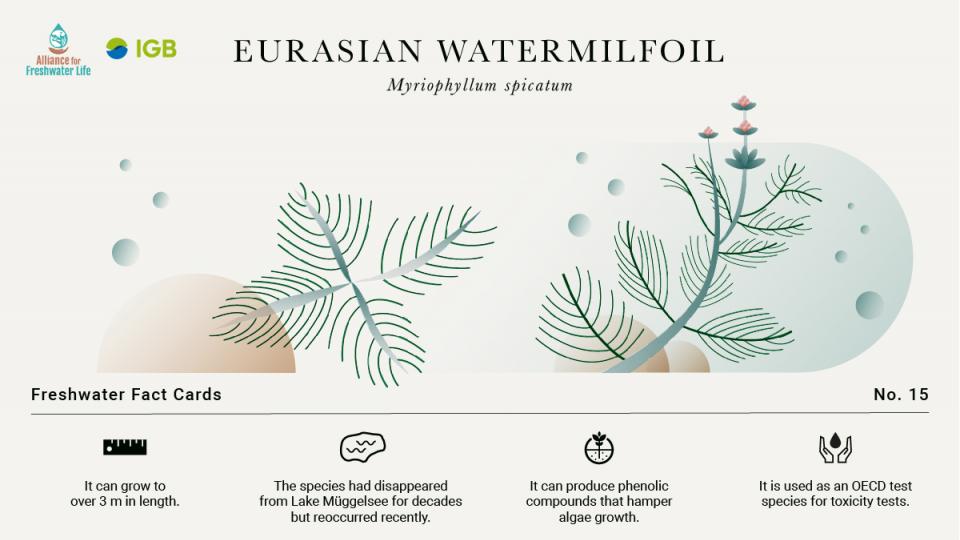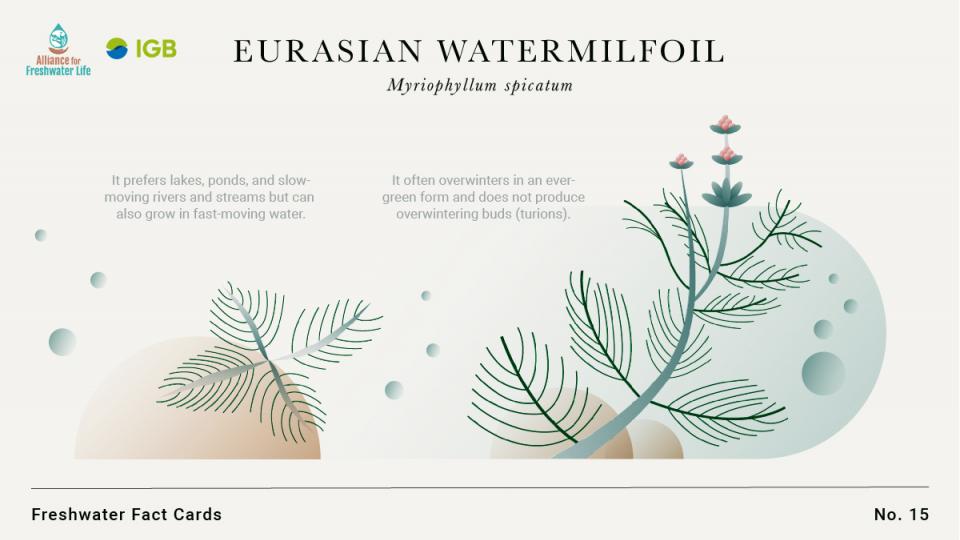
- It tolerates a wide range of conditions from freshwater to brackish.
- It prefers lakes, ponds, and slow-moving rivers and streams but can also grow in fast-moving water.
- It is a submerged, rooted species.
- It brings its flowers to the water surface for pollination.
- It often overwinters in an evergreen form and does not produce overwintering buds (turions).
- It is native to Europe, Asia, and Africa and considered as invasive species in North America.
- Its biomass is used by herbivores, e.g. the aquatic moth Acentria ephemerella, which is also used as biological control agent against this species in North America.
- It can have high concentrations of total phenolics which increases herbivore resistance. Herbivore resistance is inducible.

It can grow to over 3 m in length. The species had disappeared from Lake Müggelsee for decades but reoccurred recently. It can produce phenolic compounds that hamper algae growth. It is used as an OECD test species for toxicity tests.

It prefers lakes, ponds, and slow-moving rivers and streams but can also grow in fast-moving water. It often overwinters in an evergreen form and does not produce overwintering buds (turions).





